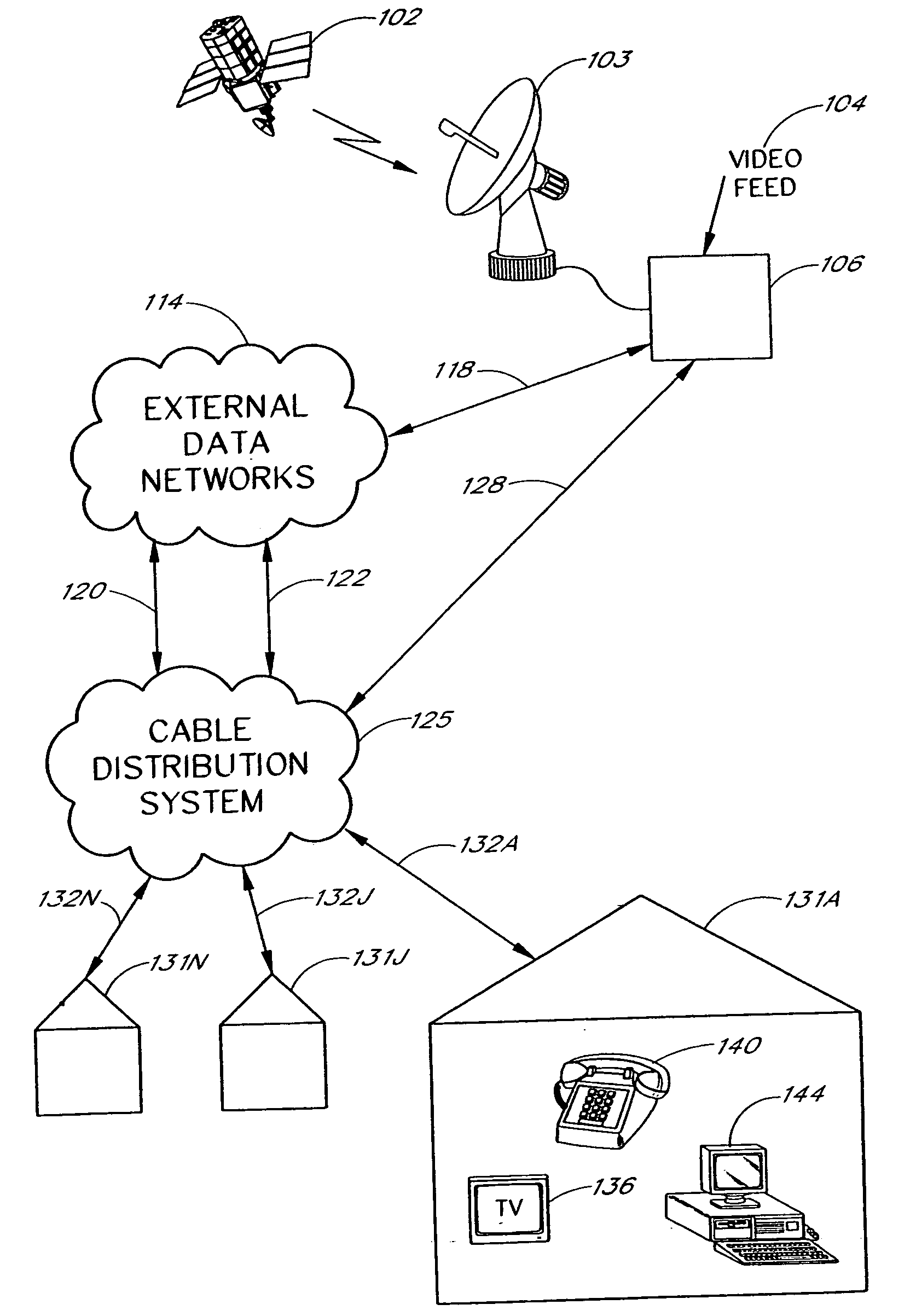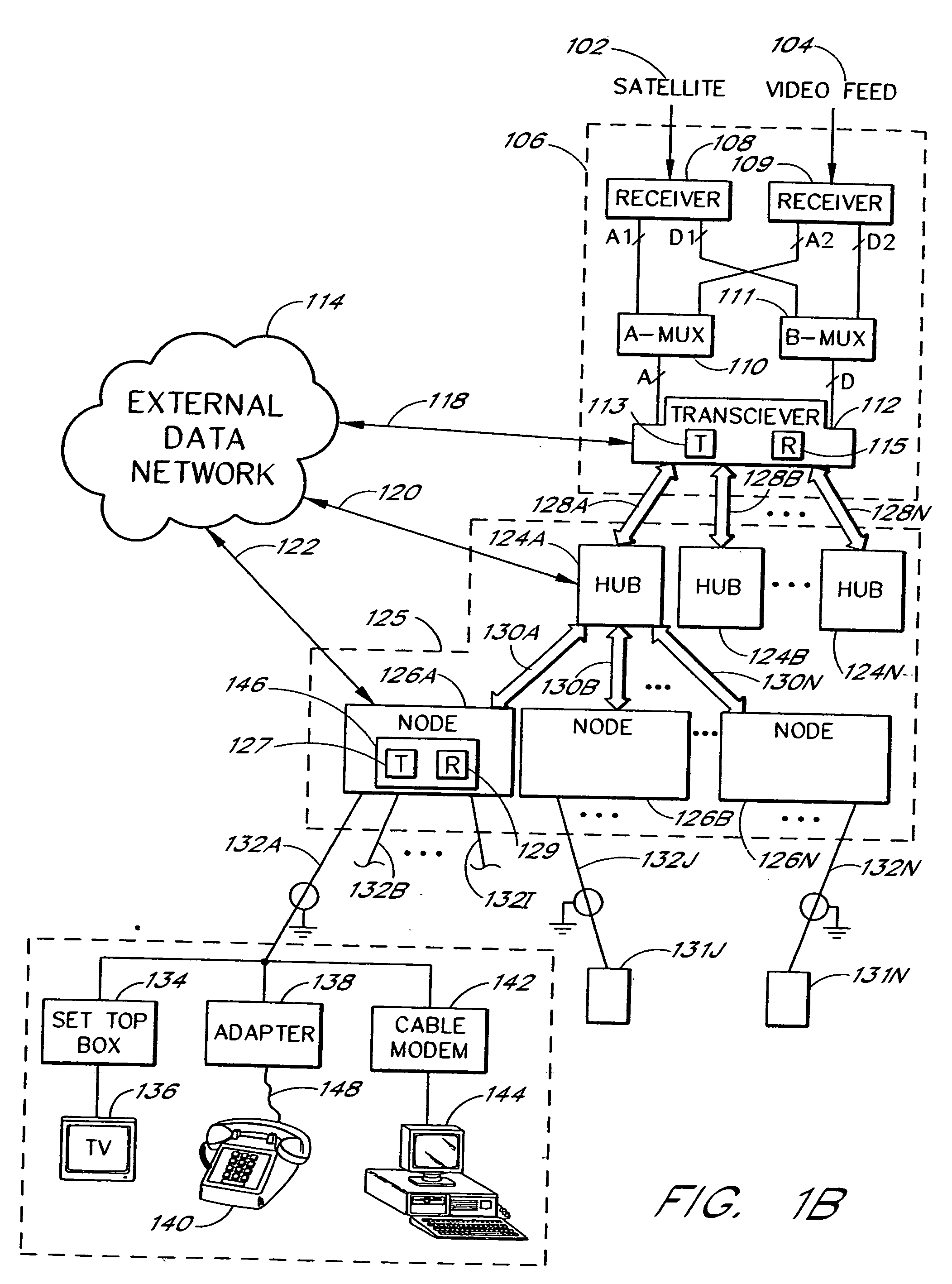Method and apparatus for a digitized CATV network for bundled services
a catv network and bundled service technology, applied in the field of digital signal processing and digital networks, can solve the problems of affecting the reliability of interactive services, so as to improve the reliability of the network, the ability to easily add or drop channels, and the effect of convenient addition or drop
- Summary
- Abstract
- Description
- Claims
- Application Information
AI Technical Summary
Benefits of technology
Problems solved by technology
Method used
Image
Examples
Embodiment Construction
[0033] The present invention involves the conversion of analog video channels, digital video channels and digital data into a digital format for transmission via fiber optic cables to nodes in a digital CATV network. The analog video channels, digital video channels and digital data in the digital format are converted to an analog broadband signal at the nodes for broadcast via coaxial cables to homes.
[0034] A digital CATV network system is illustrated in FIG. 1A. Information from various sources, such as signals received by a satellite dish 103 from a satellite 102 and signals from a video feed 104, are received at a headend 106. The headend 106 prepares the received information for transmission to homes 131 (shown as 131A, 131J and 131N) through a cable distribution system 125. Fiber optic cables 128 are typically used in transmission paths between the headend 106 and the cable distribution system 125. Coaxial cables 132 (shown as 132A, 132J and 132N) are typically used in transm...
PUM
 Login to View More
Login to View More Abstract
Description
Claims
Application Information
 Login to View More
Login to View More - R&D
- Intellectual Property
- Life Sciences
- Materials
- Tech Scout
- Unparalleled Data Quality
- Higher Quality Content
- 60% Fewer Hallucinations
Browse by: Latest US Patents, China's latest patents, Technical Efficacy Thesaurus, Application Domain, Technology Topic, Popular Technical Reports.
© 2025 PatSnap. All rights reserved.Legal|Privacy policy|Modern Slavery Act Transparency Statement|Sitemap|About US| Contact US: help@patsnap.com



